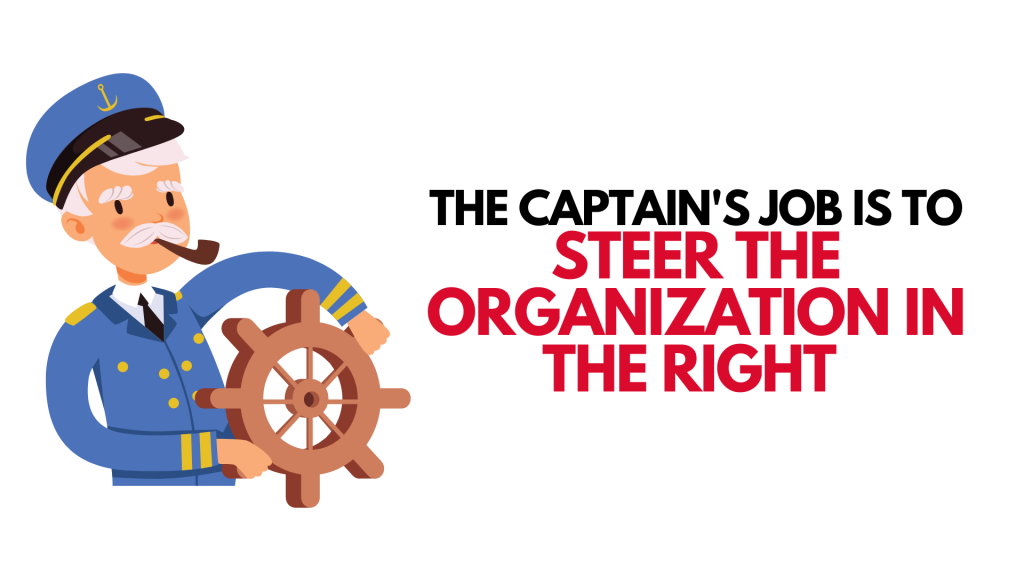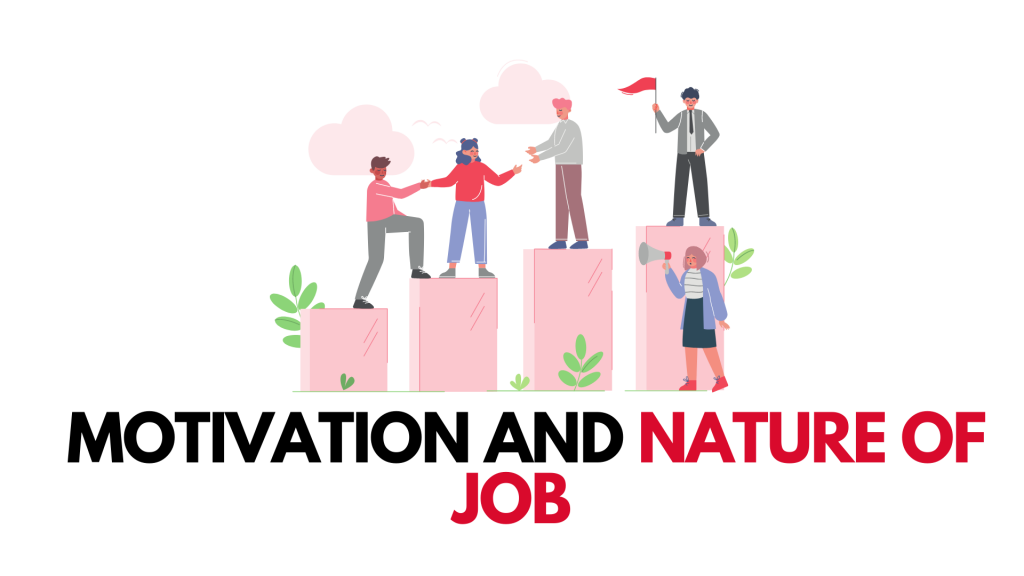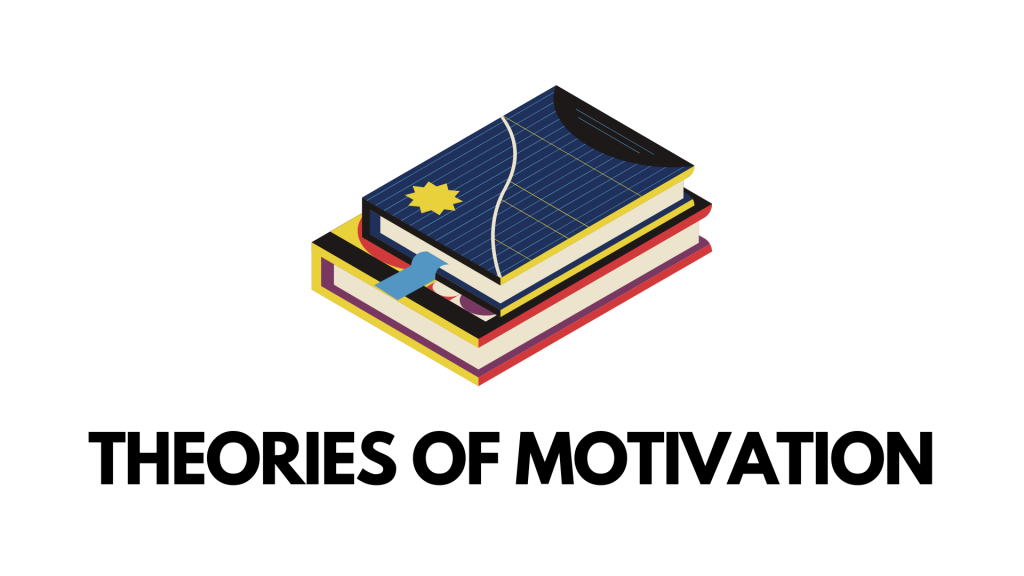In a forward-moving society, an entrepreneur carries the responsibility of bringing people together from all walks of life in order to fulfill a primary objective. In doing so, an organization is formed and an entrepreneur naturally takes on the helm as the captain of the ship.
The captain can bear any of the many available titles (CEO, CFO, CMO, etc.) in an organization but at the end of the day, the captain’s job is to steer the organization in the right direction while making sure that the ship’s crew is well-cared for.

When an organization’s size is small, the captain eats with the crew and knows everyone by a name basis. However, as the organization grows larger, the captain eats in his cabin and makes decisions for crew members he doesn’t know of. So, how does an entrepreneur bring the best out of his/her team members when he is far away from the team?
In the ‘Foundations Of Organizational Management’ course, we will deep dive into four foundations that bring the best in people: motivation, leadership, teamwork, and culture. In this part, we will dive deep into the topic of motivation.
Importance Of Motivation In An Organization

Motivation is essentially all about understanding what makes people want to move and get things done. Employees might be motivated to achieve their personal goals and their general objectives.
Motivation and growth go hand in hand. The importance of motivation in an organization are:
- Motivation in an organization increases productivity and promotes a better workforce.
- Motivation can also aid in the transformation of an organization’s work culture by ensuring an increase in organizational efficiency.
- A well-motivated environment increases and promotes loyalty among the employees helping with employee retention rate.
Moving on with the article, the foundations of organizational management talk about theories. And one of these theories is the content theory. So, what exactly is the content theory?
Content Theories
Content theories explain what motivates us. The most common examples of content theories are Maslow’s hierarchy of needs and McClelland’s need for achievement, affiliation, and power.

A system of needs that motivates people’s activities is frequently described in content theories of motivation. While process theories of motivation seek to explain how and why our motivations influence our actions, content theories seek to clarify those motivations or requirements. Content Theories have different sub-topics in them. They are:
1. Maslow’s Hierarchy Of Needs
Malow’s pyramid is one of the most widely used series to understand the motivation. One of the most well-known theories of motivation is Abraham Maslow’s hierarchy of needs. According to Maslow’s hypothesis, our activities are driven by physiological requirements. It’s commonly depicted as a need pyramid, with the most fundamental demands at the bottom and more sophisticated needs at the top.
A humanist, Maslow, thought that people had an inborn need to be self-actualized or be the best version of themselves. However, several more basic requirements must be met to attain this ultimate goal. Food, safety, love, and self-esteem are all necessities.
a. Psychological Needs
The physiological requirements are self-evident, and they include those that are critical to human life. Physiological needs include the following:
- Food
- Water
- Breathing
- Nutrition
- Air
- Temperature
b. Security And Safety Needs
People desire order and control in their life. As a result, the desire for protection and security plays a significant role in these behaviors. The following are some of the most fundamental security and safety requirements:
- Health
- Financial Security
- Insurance for accidents, injury, and thefts
- Safe neighborhood
c. Social Needs
Maslow’s hierarchy of social needs includes things like love, acceptance, and belonging. Human conduct is driven by the need for emotional connections at this level. This desire is met by a variety of items, including:
- Friendships
- Romantic Attachments
- Family
- Community
- Religious organization
- Social groups
d. Esteem Needs
The need for recognition and respect is found at the fourth level of Maslow’s hierarchy. Once the demands at the lowest three groups have been met, the esteem needs become the primary motivator for conduct.
e. Self-Actualization
Maslow’s definition of self-actualization mentions that it can be loosely defined as the complete utilization and exploitation of one’s talents, abilities, and potentialities, among other things. Such individuals appear to be content with themselves and achieve the best they can. They are persons who have reached or are on their way to reaching their full potential.
People are lovely things. They can be motivated by various things at the same time. Now, Maslow claims that you cannot fulfill higher-order wants until your lower-level needs are met, which is why these many needs are grouped in a hierarchy.
However, the essential aspect of this theory is that it expanded our understanding of how internal influences, such as our own needs, can influence our behavior. And it was here that Maslow’s pyramid made a significant contribution to progressing in motivation and knowledge development.
2. McClelland’s Human Motivation Theory
According to McClelland’s Human Motivation Theory, each person is driven by one of three primary motivators: the desire for achievement, affiliation, or power. These motivators do not come naturally to us; we acquire them due to our culture and life experiences.
McClelland proposes three different kinds of achievements. Them being: Need for achievement, Need for power, and Need for affiliation.
In contrast to Maslow, McClelland claims that humans are motivated by all three needs simultaneously and in various combinations. So, for example, someone might want more power than achievements and someone quite the opposite.
a. Need For Achievement
People driven by achievement require undertakings that are tough but not unattainable. In addition, they thrive on solving issues or dealing with unpleasant situations, so make sure you keep them engaged in this way.
b. Need For Power
Those who have a strong desire for power do best when they are in command. They excel at goal-oriented initiatives or jobs because they embrace competition. They may also be instrumental in negotiations or circumstances when another party must be persuaded of a concept or aim.
c. Need For Affiliation
People motivated by a sense of belonging function best in a group setting, so try to incorporate them into a team (rather than working alone) whenever possible. They are likewise averse to danger and ambiguity. As a result, save the hazardous projects or tasks for others when assigning them.
Along with the content theories, one of the most important parts of understanding the foundations of an organization is motivation. Motivation in any organization is very important. A motivated employee can create magic within the organization. The factor of motivation is guided by various factors. Like how the nature of the job can affect motivation.
How The Nature Of A Job Affects Motivation

The nature of our job plays a huge role in the way we are motivated in our workplace. The nature of our work influences us, and it helps explain why we do what we do.
To define this, we have two different theories to explore. The first is Herzberg’s theory regarding motivating versus hygiene factors. And a second is the job characteristics model by Hackman & Oldham.
1. Herzberg’s Two-Factor Theory Of Motivation
According to Frederick Herzberg, employee pleasure has two dimensions: “hygiene” and “motivation.” Employee unhappiness with the work environment is reduced by hygiene concerns such as remuneration and supervision. On the other hand, employees become more productive, innovative, and committed due to motivators like praise and achievement.
a. Hygiene Factors
Hygiene considerations are those aspects of the job required for motivation to exist at work. Unfortunately, these do not contribute to reasonable long-term satisfaction. However, if these factors are missing or non-existent in the job, unhappiness will result.
Because they are required to avert unhappiness, hygiene factors are also known as dissatisfiers or maintenance factors. These characteristics describe the job environment/scenario. The hygiene aspects represented the physiological demands that people sought and expected to be met.
b. Motivational Factors
The hygiene elements, according to Herzberg, cannot be considered motivators. Positive satisfaction is a result of motivational factors. These aspects of the job are unavoidable. These elements encourage employees to give their best effort. These elements are known as satisfiers. These are aspects of the job that must be considered.
These aspects are naturally rewarding to employees. The motivators represented the psychological requirements that were seen as a bonus.
2. Job Characteristics Model By Hackman & Oldham
Hackman and Oldham’s work characteristics model has been founded on the premise that the task is crucial to employee motivation. A dull and monotonous job, on the other hand, stifles motivation to perform effectively, but a tough job boosts motivation. Adding variety, autonomy, and decision authority to work are three methods to make it more challenging. Job enrichment and job rotation are two methods for increasing variety and challenge in the workplace.
This model looks into three categories of variables.
a. Characteristics Of Job
In the characteristics of a job, the most critical questions that are explored are, “How does the job work?” “How does your job work like?” and many more. The job characteristics model advocates the importance of work, accountability for results, and knowledge of outcomes. So when you feel like you’re making a positive impact on someone or something, you know you’re doing meaningful work.
b. Psychological State
Psychology or responsibility, because you have sufficient flexibility of action, you have been given the potential to be a success or failure at your employment. This would involve making adjustments and utilizing what you learn on the job.
c. Outcomes
This is significant for a few reasons. First, present the person with information on how successful their job has been, allowing them to learn from their mistakes. The second is to emotionally tie people to the customers of their outputs, giving the task more meaning.
With Content Theory, one of the other important theories is the theory of goal setting and process theory of motivation.
The Goal Setting Theory

Edwin Locke proposed the goal-setting theory of motivation in the 1960s. According to this view, goal-setting is inextricably tied to task performance. It claims that setting clear and challenging goals and receiving appropriate feedback improves task performance.
The consequences of setting goals on later performance are referred to as a goal-setting theory. According to researcher Edwin Locke, individuals who set particular, demanding goals outperformed generic, simple goals.
Process Theories Of Motivation

Let’s jump into our theories.
1. Expectancy Theory
According to the idea, the degree of a desire to act in a certain way is determined by the intensity of an expectation that the performance would be followed by a specific outcome and the appeal of the development to the individual.
Employee motivation, according to the Expectancy theory, is determined by how much an individual wants a reward (Valence), the chance that the effort will lead to expected performance (Expectancy), and the belief that the commission will lead to compensation (Belief) (Instrumentality).
2. Theory X and Y
Douglas McGregor, a social psychologist, established two opposing ideas in the 1960s to explain how managers’ perceptions about what motivates their employees can influence their management style. He labeled Theory X and Theory Y. Even today, these theories are still relevant.
a. Theory X
Theory X supervisors have a gloomy attitude toward their employees, assuming they are innately unmotivated and detest their jobs.
Organizations that use a Theory X strategy, according to McGregor, tend to have numerous tiers of managers and supervisors to oversee and direct personnel. As a result, control is firmly centralized, and authority is rarely distributed.
b. Theory Y
Theory Y managers have a positive attitude toward their employees and management decentralized, participative manner.
Managers push employees to enhance their abilities and suggest improvements as they take on more responsibility. Appraisals are held regularly, but they encourage open dialogue rather than manage employees, as they are in Theory X businesses.
Equity Theory
The concept of equity theory is founded on the premise that fairness motivates people. Simply put, equity theory suggests that if a person notices an unfairness between themselves and a peer, they will change their effort to make the situation more equitable in their perspective.
John Stacey Adams, a workplace behavioral psychologist, established Adam’s Equity Theory, often known as the Equity Theory of Motivation, in 1963.
Outcome Theories
Outcome theory provides a conceptual framework for thinking about and working with any outcomes system. Any system that identifies prioritizes, measures, attributes, or holds parties accountable for outcomes of any kind in any domain is an outcomes system.
Outcome theory covers ground covered by other approaches in economics, accounting, psychology, evaluation, and public policy, for example. Like any other theory, outcome theory should be judged on its potential to throw new light on occurrences, even if other disciplines have already postulated some parts of those phenomena.
